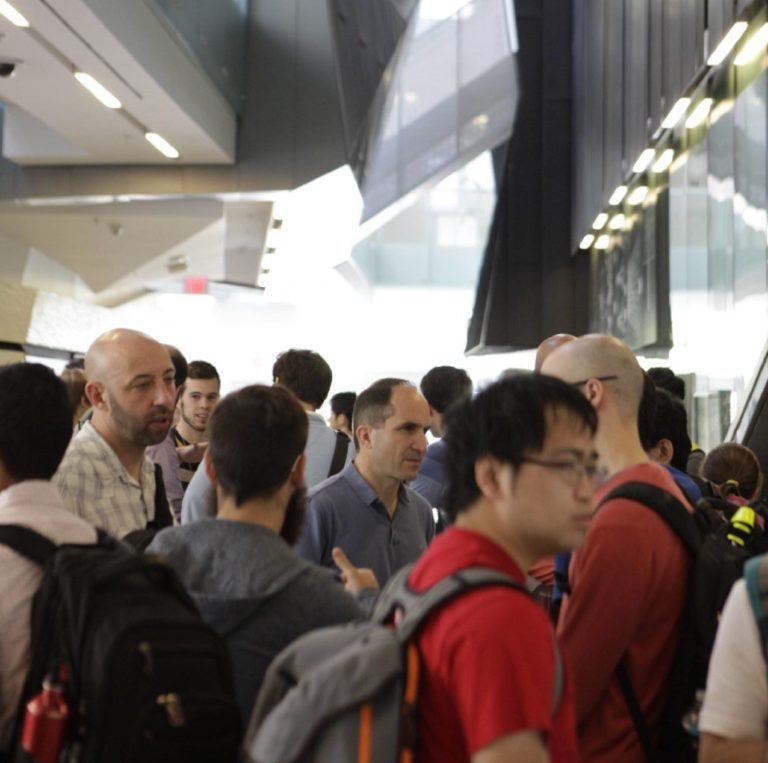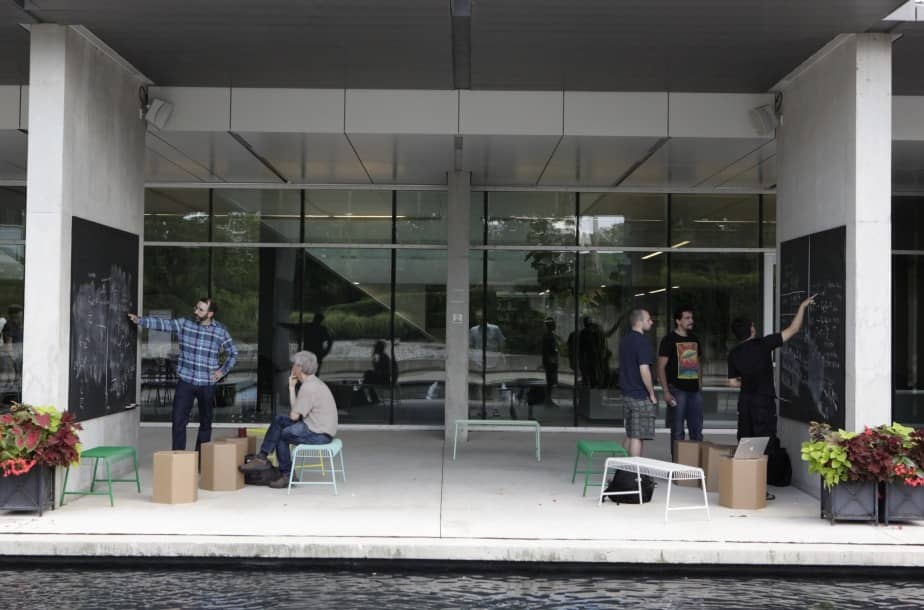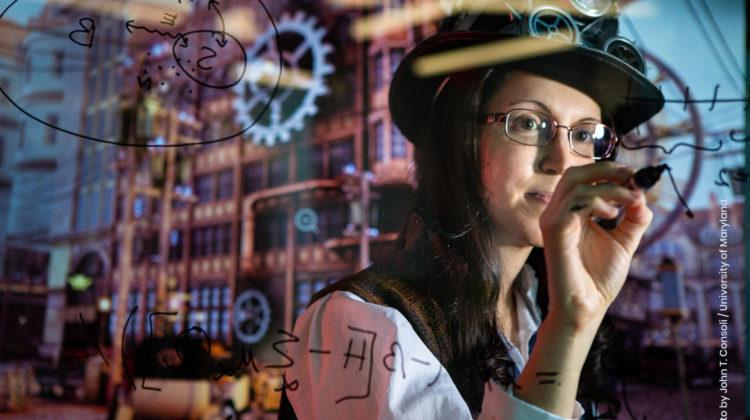In search of a common language
How physics is breaking down communication barriers between specialties, and hoping to make big discoveries along the way.

How do you express an idea? Poets use words, dancers use movement, and physicists rely on a mix of mathematics and specific terminology to give form to the ephemeral.
As knowledge builds, so too does the language that encodes that knowledge. Specialization creates communities with their own dialects and tools. When a physicist steps from their area of expertise and into another, they can easily get lost in a thicket of unfamiliar terms and descriptions.
Yet there is mounting evidence that some of today’s most promising avenues of inquiry in physics lie not within specialties, but between them. Of particular interest: the area between high energy physics and quantum information.
On the surface, these areas appear disparate: high energy physics aims to understand the fundamental building blocks of our physical universe at the smallest scales; quantum information science seeks to harness the weirdness of quantum theory to develop new systems for ultra-fast computation and ultra-secure communications.
In recent years, there have been tantalizing hints of connection: high energy theorists have been borrowing techniques and concepts originally developed in quantum information to make headway with some of their deepest puzzles, such as the conundrums of quantum gravity.
A year ago, scientists from around the world formed It from Qubit: Simons Collaboration on Quantum Fields, Gravity, and Information, aiming to promote communication and connection between the two research communities. In July 2016, Perimeter Institute held the first major conference of that collaboration.
An unusual gathering
The “It from Qubit” combined workshop-and-summer-school brought together 180 researchers from around the world – many more than the organizers originally expected, and far fewer than the number who actually applied to attend. Livestreams of the main lectures and research seminars enabled remote participation to meet the demand (recordings can be viewed here).
The final mix was a great snapshot of modern physics, blending a broad mix of specialties: quantum gravity, particle theory, condensed matter physics, quantum foundations, quantum information, and computer science.
“It’s really exciting to see ideas that were originally formulated for completely different reasons having resonance and utility,” said Patrick Hayden, a quantum information theorist from Stanford University, who is also the director of the It from Qubit collaboration.
“It gives you a new perspective on your own field. Things that you thought were routine and uninteresting – from a different perspective become much more profound, [while] things that you thought were crucially important recede a little bit into the background.”
 Participants set their sights on big issues: Does spacetime emerge from entanglement? How can quantum mechanics and gravity be unified? Can the new applications for quantum information uncover something fundamental about information itself?
Participants set their sights on big issues: Does spacetime emerge from entanglement? How can quantum mechanics and gravity be unified? Can the new applications for quantum information uncover something fundamental about information itself?
The program started with introductory lectures and deepened towards more advanced topics, while also featuring discussions, seminars, and problem-solving sessions. Graduate students found themselves working alongside world-leading researchers as they all dived into unfamiliar waters.
“I’m here to learn,” said Dorit Aharonov, a quantum computation researcher from the Hebrew University of Jerusalem who spent hours in conversation with a broad mix of attendees.
“I’ve always wanted to understand these deep questions about gravity and black holes, and why quantum does not meet well with gravity. For me, this is an opportunity to learn about those things in my language.”
Translating big ideas
This is no small thing. Accurate translation does not just transpose these words for those. It deftly carts knowledge across the divide, allowing for it to be understood and applied in new ways.
Aharonov, like many attendees, said she expected to pursue new collaborations and research stemming from the gathering. That is exactly the result organizers were hoping for.
“There’s an overlay of the old questions, the old language and these new ideas. It just seems remarkable how well they fit together,” said Robert C. Myers, a string theorist at Perimeter Institute who took the lead in organizing the event.
“The questions that I may be asking are old to me, but they may be completely new questions to someone else, and so they’re being challenged in new ways. The enthusiasm and energy of the participants was amazing. There was a really remarkable buzz throughout the entire two weeks.”
One of the goals of the summer school – and of the broader collaboration itself – is to train a new generation of researchers to be fluent in both quantum information science and high energy physics.
It’s not a token effort; much of the progress in the field is being pushed by junior researchers, said Ted Jacobson, a gravitational theory researcher and professor at the University of Maryland.
“Of the 10 people that are producing the most interesting new ideas right now, sparking the field, probably eight of them are young people,” Jacobson said.
“It’s fantastic, and it gives me great hope for the field. … They have the benefit of all the hard work that came before and the revelations of string theory and AdS/CFT duality. And now they’re charging forward with it and really making sense of it.”
Whether or not the “It from Qubit” summer school, workshop, or broader collaboration leads to the resolution of big physics challenges is almost beside the point, said Vijay Balasubramanian, a particle physicist at the University of Pennsylvania.
What is more important, he said, is that the young researchers flooding into the area will acquire valuable tools and techniques to dismantle the barriers of language and meaning that exist between high energy physics and quantum information.
“These are the people who are going to make the progress for tomorrow,” Balasubramanian said. “I’ve been talking with a lot of the students, and they’re completely fired up. They like this interface. It From Qubit strikes a note that students find inspiring.
“And honestly, maybe spacetime is built from entanglement. Maybe it isn’t. But if it isn’t, the students … are going to go off and do wonderful things in other directions anyway.”






















































































